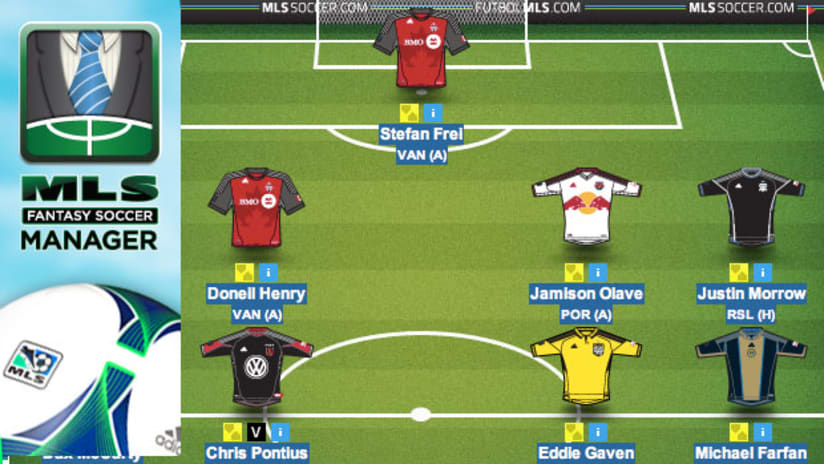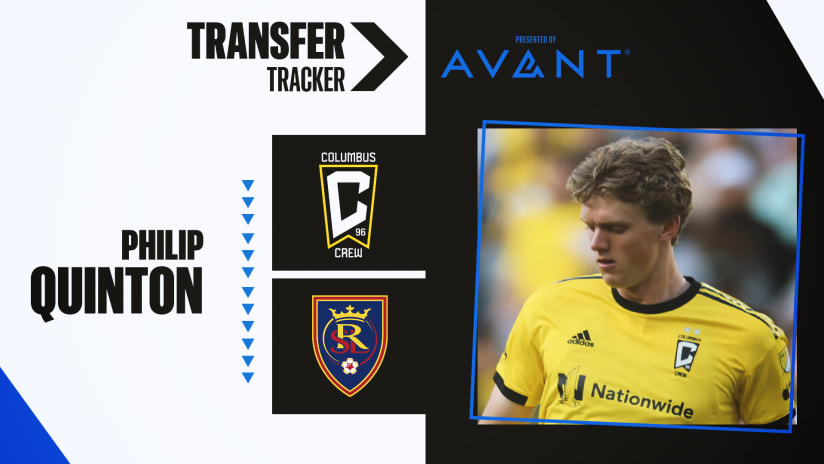MLSsoccer.com continues our multi-part series about how to start playing MLS Fantasy Soccer: Manager, our exclusive season-long fantasy game. Contributor Schuyler Redpath, one of the alltime best MLS fantasy players, will walk you through the game, from the basics of building a team to tips on the best way to optimize your selections within the salary cap.
Part V: Everything you need to know about formations
In the last MLS Fantasy 101, we discussed how substitutions work to help you know how and when to move players in and out of your lineup to optimum effect. But in MLS Fantasy Soccer: Manager, substitutions are really only as effective as the formation you choose.
Your chosen formation will reflect your philosophy. Do you throw the kitchen sink at your opponents and go all-out attack? Or should you bunker down and hope to rack up some defensive points? It's a long season and you'll find that there are many variables to consider when choosing the right formation. The formation you select will play a big part in how many points your teams scores from round-to-round.
Essentially, you can roll out any formation you want. Go to the "My Team" page on your fantasy log-in page. Your formation will automatically change based on the players you have chosen. So if you insert 4 defenders, 4 midfielders, and 2 strikers, you'll play a 4-4-2. If you replace one of those 4 defenders with a midfielder, you'll automatically switch to a 3-5-2. The other formations available are: 5-4-1, 5-3-2, 5-2-3, 4-5-1, 4-3-3 or 3-4-3 formation.
As the manager, you will have to decide the best formation to use based on the players you have selected for your 15-man roster. Fantasy is all about giving your team the best chance to earn points. With this in mind, let's take a look at how each formation can impact your team:
ATTACKING FORMATIONS
As I mentioned earlier in the week, focus on attack-minded players, such as players listed as a Midfielder in FS:M who play as a Forward for their team. The same goes for players listed in the fantasy game as Defenders who play as a wide Midfielder in the real games. If you are keen on player positioning, you could find that even though your fantasy team is lined up in a 4-4-2, in real life it plays out as an unconventional, but wildly effective, 0-6-4 or 0-4-6.
3-4-3 and 3-5-2
Pros: Both of these setups ensure your team is loaded with attacking flair. Since midfielders and forwards are awarded the same amount of points for offensive contributions, you can pick your poison based on the strength of your squad at each position. Remember the point system. An advantage of overloading your midfield is that midfielders are awarded 1 point if their club posts a clean sheet (provided they play at least 60 minutes).
Cons: The lack of defenders can be a concern. Even the most high-scoring striker can have an off day. Defenders can pick up points, though rarely in the bunches that goalscorers do. So you will want to be confident in the three defenders you choose to go with, in case your attackers miss the target.
This isn't to say don't focus on defense, because your defense could be the kicker in setting you apart from the pack. Obviously, you don't want to go 5-4-1 when the core of your defenders have a week where they are playing top scoring teams.
However, there are instances where you will want to take a more defensive approach.
DEFENSIVE FORMATIONS
Imagine you have three defenders all from one of the league's top defensive units, and they happen to have a home game versus a team who is in an offensive rut. Last year, Chivas USA had a five-game scoreless streak. Take note of these streaks and use them to your advantage, adjusting your formation to reduce the strikers and add defenders.
Another example: Let's say that you have a goalkeeper and two defenders from the same club, one that is tough defensively at home. On a particular week, they host a team who struggles to score on the road. On top of that, their top two goal scorers were just called up for international duty, which we will see a lot of this season with World Cup qualifiers and the Gold Cup. All the while, your FS:M midfield and forward core also just took a hit with some international call-ups or are dealing with niggling injuries, leaving you very thin at these positions. Now is the time to think defensively.
5-4-1, 5-3-2, 5-2-3
Pros: As mentioned above, if the match-ups are favorable you could potentially earn a lot of defensive points. Additionally, defenders earn an additional point for each goal scored. If your defenders get a clean sheet and get their name on the score sheet, the fantasy points will start to pile up in bulk.
Cons: Just as a top striker can have an off day, the best defensive units can falter at times too. All it takes is one goal, and the bulk of the defensive points you were counting on are out the window. At that point you can only hope for some offensive production from your defenders. And you will have to rely on your midfielders and forwards to carry your team.
NEUTRAL FORMATIONS
4-4-2
Pros: This is a "meat and potatoes" formation. You have a good mix of defenders, midfielders and forwards. You aren't relying heavily on one facet of your lineup, because you have the potential to earn points from every position.
Cons: You are expecting production across the board. If you get poor production from any one area -- defense, midfield or forwards -- your point total will take a hit.
4-3-3
Pros: In fantasy the 4-3-3 could be grouped with the attacking formations. While you have firepower up top with three strikers, it gives you additional insurance at the back if you're confident in your defenders match-ups. Plug in some attacking midfielders and the 4-3-3 could be just the right mix.
Cons: Again, if your strikeforce fails, you will have to fall back on your midfielders and defenders. With just three midfielders, even a mediocre day from your defense could spell disaster.
4-5-1
Pros: With the 4-5-1 there is potential to earn additional defending points across the board. With the extra point earned for midfielders whose clubs don't concede, this formation could prove fruitful. If you can find five attack-minded midfielders with a good backing defense, you could set yourself up to earn a good share of defensive and attacking points.
Cons: You will have two forwards sitting on your bench, in lieu of an additional midfielder or defender. With the scoring system rewarding attacking play over everything else (as it should), you may be wishing you included that extra striker who scored a hat-trick but earned 0 points for your fantasy team because he was on your bench.
Ultimately, every manager can make an argument as to why one formation is better than another. As the season plays out, you will find there is a different approach to take week in and week out.











